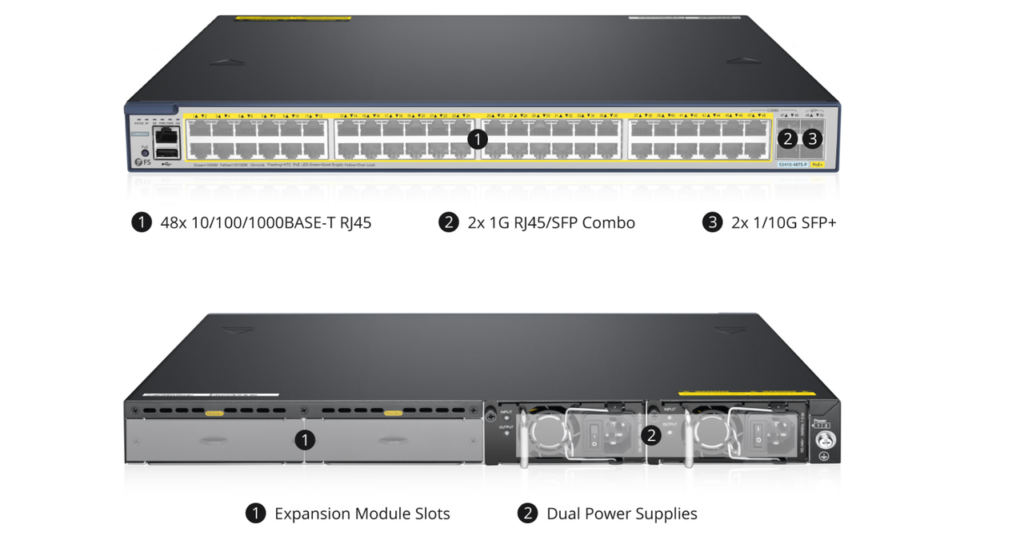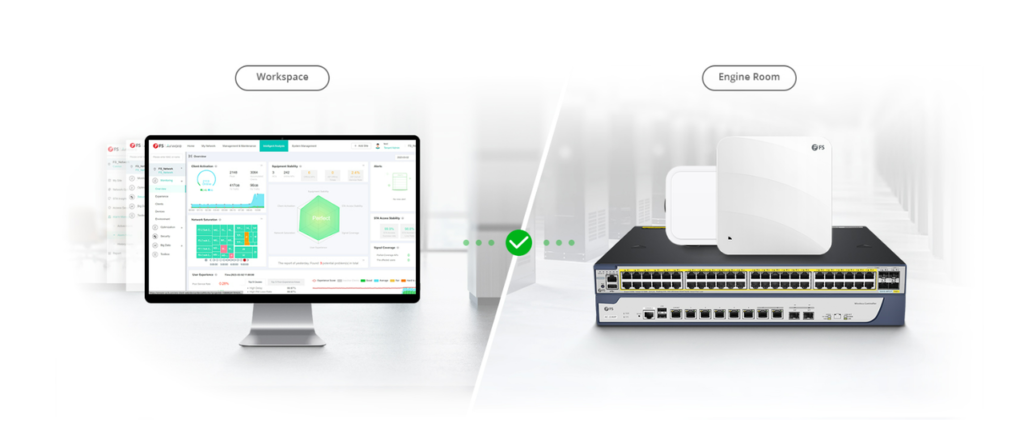In today’s ever-evolving digital landscape, where the Internet of Things (IoT) is reshaping industries and everyday life, keeping pace with the forefront of technology is essential. One technology making a significant impact on IoT is Power over Ethernet (PoE). In this article, we’ll delve into a comprehensive understanding of PoE, explore its current applications, and unveil the pivotal technological trends shaping its role in the dynamic world of IoT.
Understanding PoE Technology
At the core of many IoT devices and applications lies Power over Ethernet (PoE) technology. But what exactly is PoE, and why is it pivotal in the IoT landscape?
Simplified PoE
Power over Ethernet, or PoE, is a technology enabling both power and data transmission over standard Ethernet cables. In the context of IoT, this means that IoT devices can be powered and connected to the network using a single cable. This technology streamlines installations and reduces the necessity for additional power sources, making it an ideal solution for a wide range of applications.
Key Components of PoE
To gain a thorough understanding of PoE, let’s break it down:
- PoE Switches: These are network switches equipped with built-in PoE capabilities. They can provide power to PoE-enabled devices such as security cameras, access points, and sensors.
- Injectors and Midspan Devices: These are standalone devices capable of adding PoE functionality to an existing network. They are valuable when upgrading a non-PoE network to support PoE devices.
- PoE Devices: These are the IoT devices that can be powered and connected via PoE, eliminating the requirement for separate power sources.
Current Applications of PoE in IoT
PoE technology has found numerous applications in the world of IoT. Some of the most common applications include:
1. IoT Security Cameras:
PoE simplifies the installation of security cameras. With a single cable providing both power and data, cameras can be placed in more locations, enhancing security.
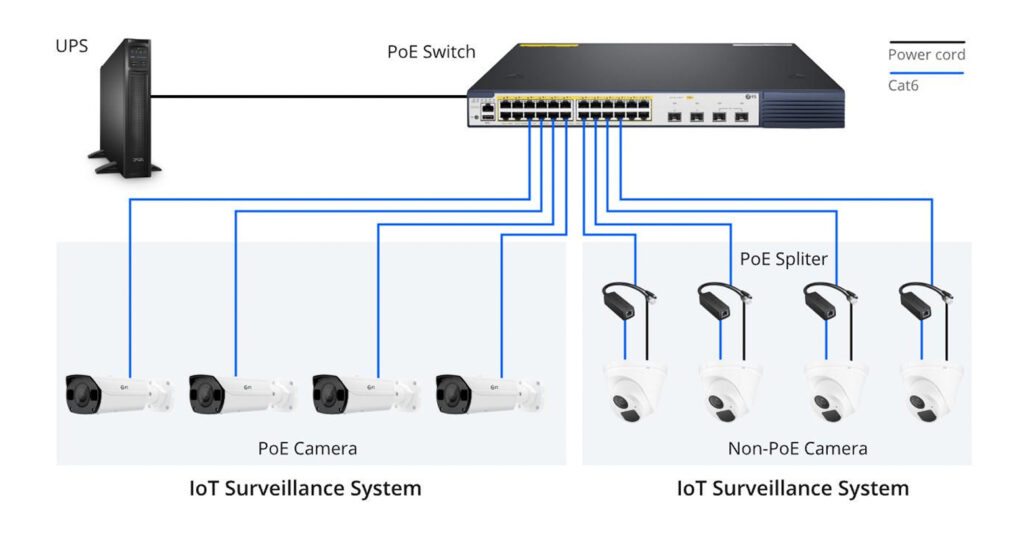
2. IoT Access Points:
Access points in wireless networks benefit from PoE, as it reduces the complexity of adding or relocating access points.
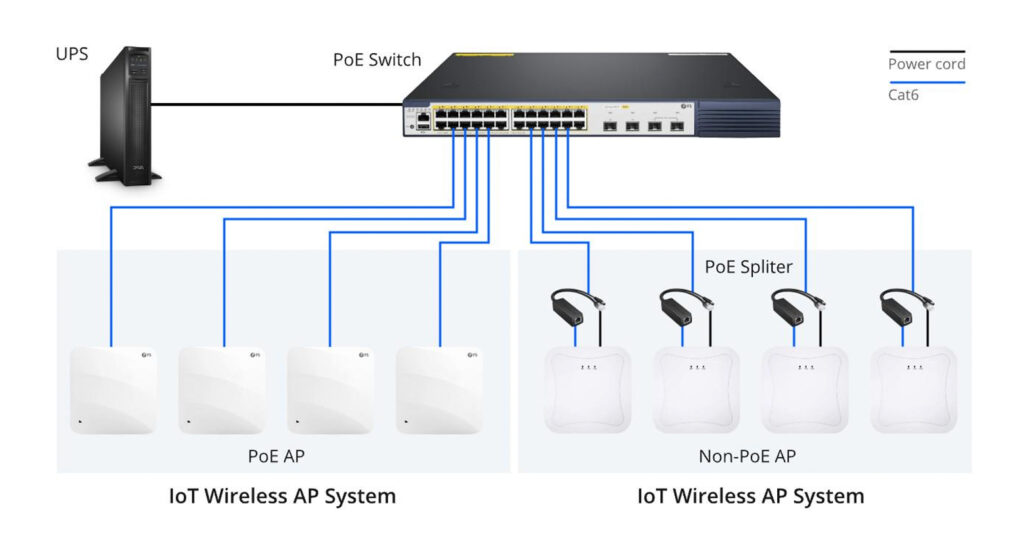
3. IoT Sensors:
Sensors used in various IoT applications can be powered and connected using PoE, streamlining their integration into the network.
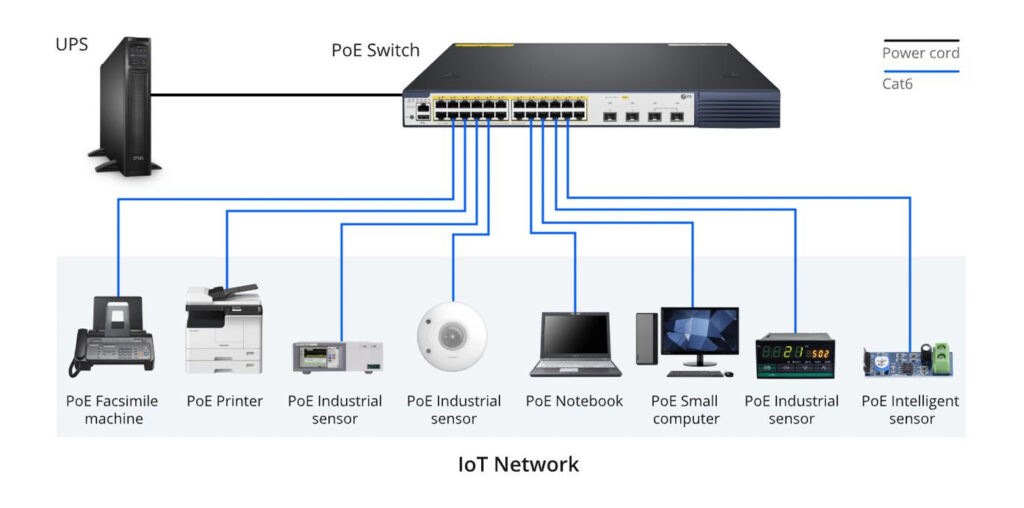
Emerging Trends in PoE Technology
As technology continues to advance, PoE is not standing still. Several compelling trends are propelling the integration of PoE technology into cutting-edge IoT solutions, encompassing:
1. The rise of high-power PoE:
The introduction of the IEEE 802.3bt standard, often referred to as PoE++, has brought forth a groundbreaking power class capable of delivering a remarkable 90W through a single Ethernet cable. This breakthrough broadens the horizons for powering a diverse array of IoT devices, including high-power consumers such as smart displays, digital signage, and industrial sensors.
2. The development of PoE over long distances:
While conventional PoE systems can typically convey power over distances of up to 100 metres, contemporary PoE solutions extend this reach to several hundred metres, and in some cases, even kilometres. This advancement paves the way for the deployment of PoE in remote or hard-to-access locales, facilitating applications like outdoor security cameras and traffic monitoring systems.
3. The emergence of intelligent PoE systems:
PoE systems are evolving into increasingly sophisticated and intelligent ecosystems. This evolution opens the door to more streamlined power management and control. For instance, advanced PoE systems empower remote activation and deactivation of devices. Additionally, they enable dynamic adjustments in device power consumption based on real-time demand, resulting in heightened energy efficiency.
Future Prospects for PoE in IoT
The future of PoE in IoT looks promising. As 5G networks roll out and artificial intelligence (AI) continues to advance, PoE is poised to assume a more significant role. Consider these prospects:
- 1. 5G and PoE in IoT
- The expansion of 5G networks will propel the IoT’s growth, with PoE being essential in supporting the infrastructure required for high-speed, low-latency connectivity.
- 2. AI Integration in PoE
- AI-driven devices and applications stand to benefit from PoE’s capacity to simplify installations and offer centralized power and data management.
Challenges and Solutions
Despite its numerous benefits for IoT, PoE encounters challenges such as compatibility issues and power limitations. Fortunately, solutions exist to mitigate these challenges. For instance, employing midspan devices can adapt non-PoE networks, while opting for higher power PoE solutions can cater to devices with greater energy demands.
Conclusion
PoE emerges as a pivotal technology in facilitating the next generation of smart devices and services. Versatile, efficient, and cost-effective, PoE is well-suited for diverse IoT applications. As the IoT market expands, PoE is anticipated to assume an increasingly crucial role in enabling the next wave of smart devices and services.
Related Articles:
FS Switches Now Support PicOS® for Unified Networking Experience




